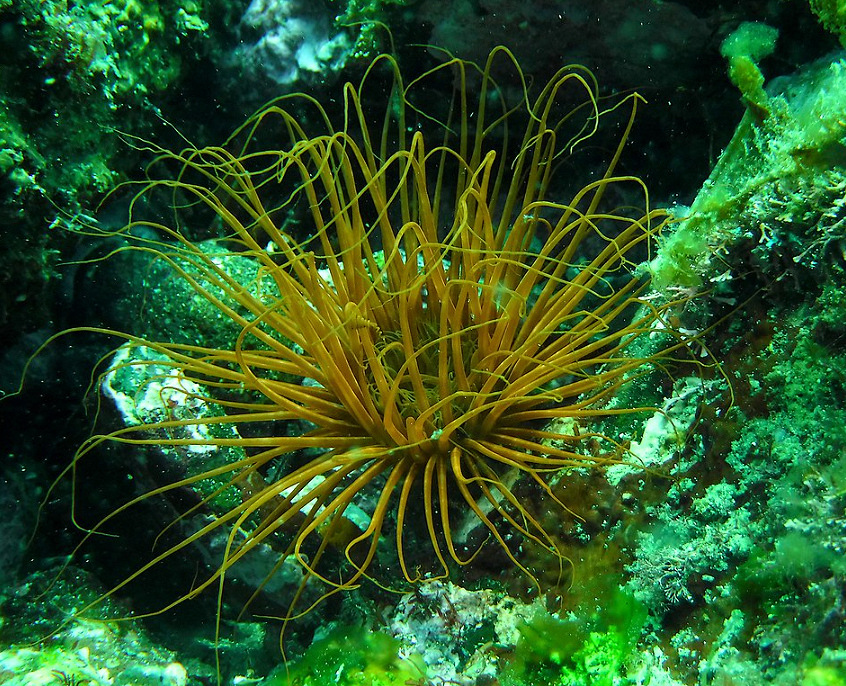Cerianthidae Family of Tube Anemones
 Pacific Tube Anemone, Pachycerianthus fimbriatus. A representative of the Cerianthidae Family of Tube Anemones.
Pacific Tube Anemone, Pachycerianthus fimbriatus. A representative of the Cerianthidae Family of Tube Anemones.
Phylogeny: The Tube Anemones are a member of the Cerianthidae Family. The Tube Anemones resemble Sea Anemones, but they are only distantly related. They have no close relatives. Tube Anemones are more complex than they appear. One species has the longest mitochondrial genome reported to date, with 81,000 base pairs of genetic information. By contrast, Humans have less than 17,000. Like hydroids, jellyfish and stony corals the belong to the Phylum Cnidaria. They are in the Class Anthozoa and the Order Spirularia.
Distribution: Tube Anemones are found in all temperate, and tropical seas globally. There are one hundred known species in the Cerianthidae Family of which five are found along Mexico’s Pacific coast. They are found from the intertidal zone to depths that exceeding 1500 m (4,920 feet). They are usually found buried in soft substrates, but they can be found anchored in reef crevasses.
Morphology: Tube Anemones have radial symmetry, a hallow digestive cavity, and specialized stinging structure (cnidome) in tentacles surrounding the mouth. They have a smooth oral disk, stalk and tentacles. Their polyps have a flower-like appearance. They have a whorl of long tentacles around their margin that extend outward and are primarily for food gathering and defense. They also have a whorl of short, erect tentacles around their mouth that are used for food manipulation. These Tube Anemones lack the pedal disk that Sea Anemones use to anchor themselves to hard substrate and have to bury or wedge themselves into the substrate to hold themselves in place. They live in a parchment like tube that is imbedded in the sediment. The tube is elongate and it is made of a collagenous network of mucous and threads (ptychocysts) and therefore remains flexible. The tube is often covered by sand grains, shell fragments, and other debris. The entire animal can quickly withdraw into the tube if disturbed. The tubes of the Tube Anemones can exceed 2.0 m (6 feet 7 inches) in length. Tube Anemones can be found in a variety of colors, including: black, blue, orange, purple, yellow, and white. Some species have the ability to fluoresce, by absorbing ultraviolet light and emitting it as visible light.
Ecosystem Roles: Tube Anemones are omnivores that feed as predators, suspension feeders or depositional feeders. Small crustaceans, detritus and plankton are their primary food sources. In turn they are preyed upon by crustaceans, fish and nudibranchs. They have the ability to regenerate lost tentacles and the tube in which they reside. Tube Anemones, will, at times, leave their tube, but they become at the mercy of the currents.